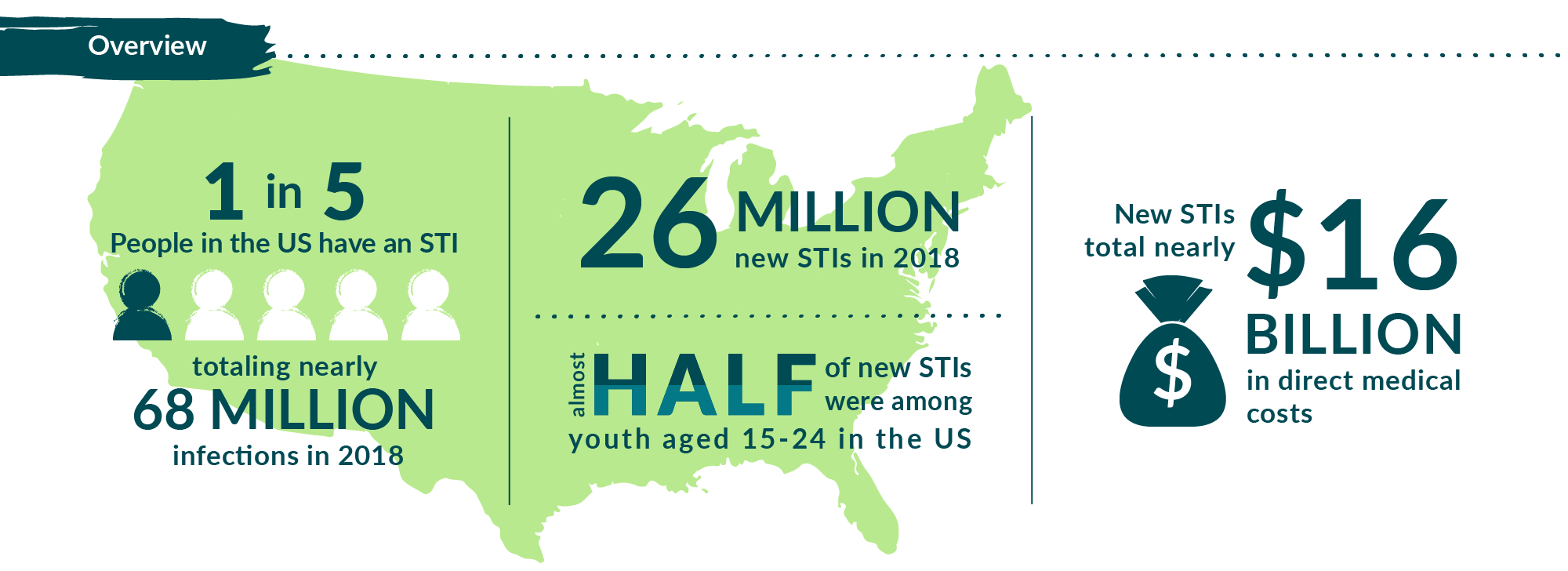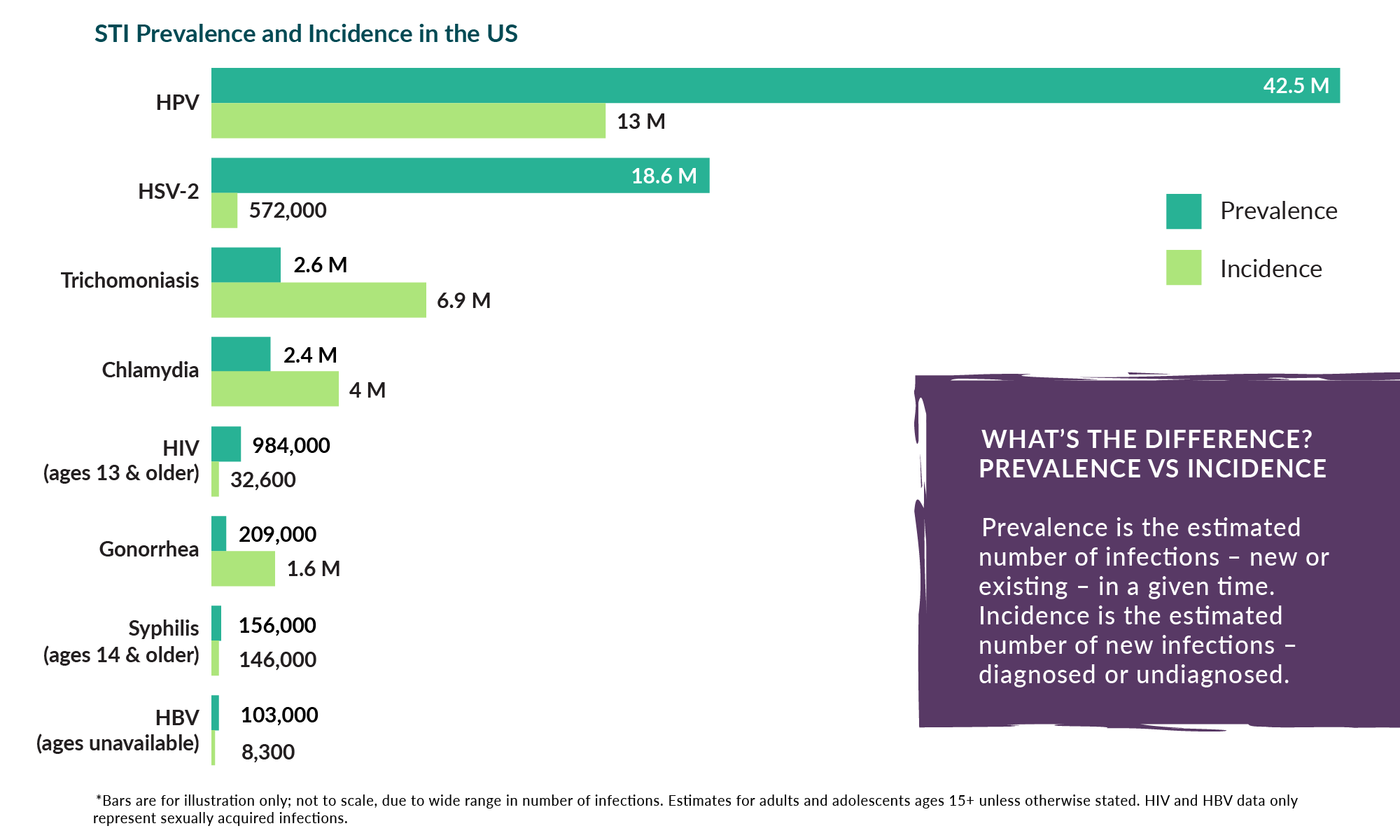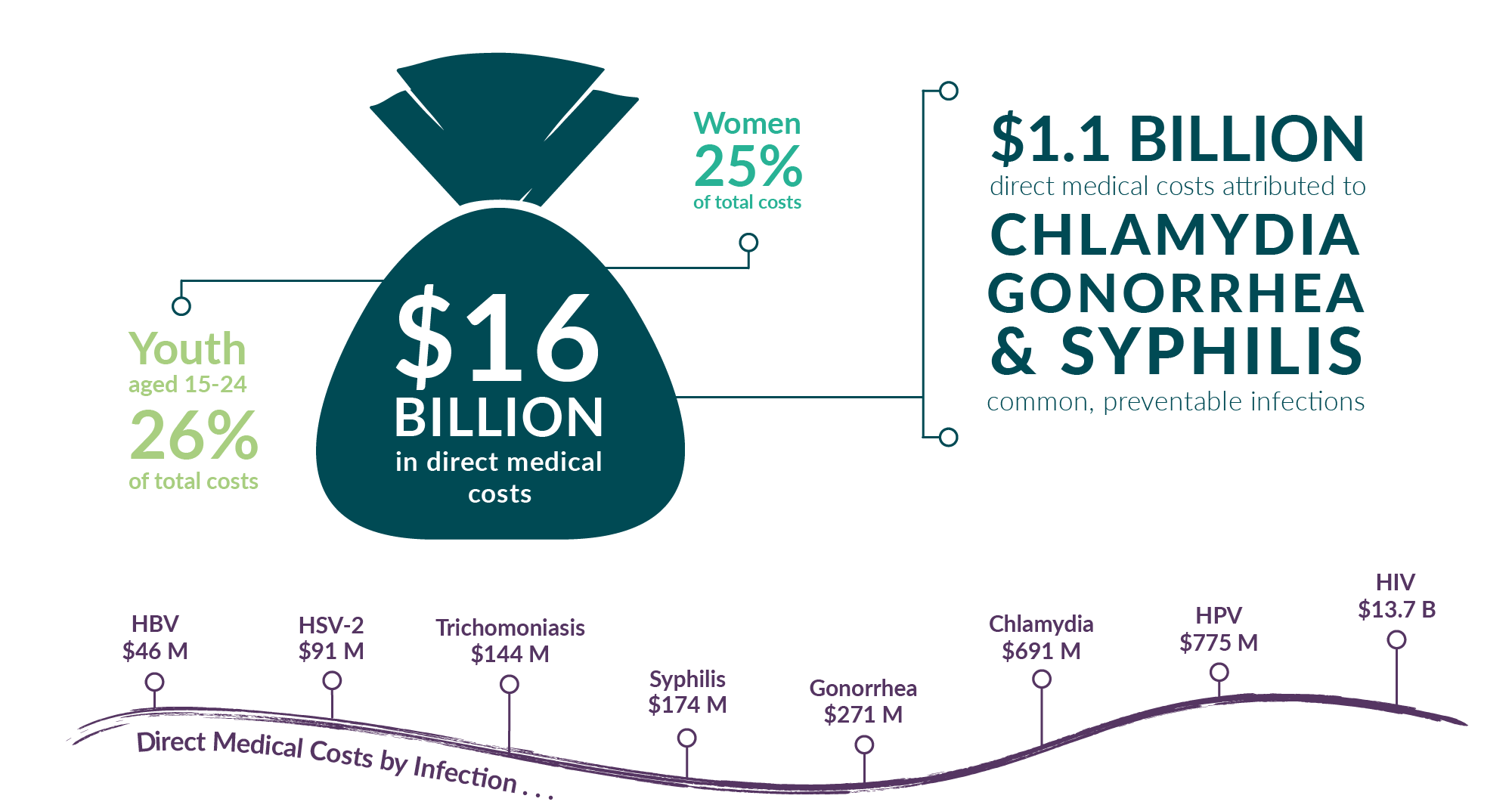Sexually Transmitted Infections Prevalence, Incidence, and Cost Estimates in the United States
A CDC analysis provides the clearest picture to date of STIs in the United States. CDC estimates indicate about 20 percent of the U.S. population – approximately one in five people in the U.S. – had an STI on any given day in 2018, and STIs acquired that year will cost the American healthcare system nearly $16 billion in healthcare costs alone.
The analysis included eight common STIs: chlamydia, gonorrhea, hepatitis B virus (HBV), herpes simplex virus type 2 (HSV-2), human immunodeficiency virus (HIV), human papillomavirus (HPV), syphilis, and trichomoniasis. Chlamydia, trichomoniasis, genital herpes, and HPV accounted for 98% of all prevalent STIs and 93% of all new STIs in 2018.
Given the serious health consequences of untreated STIs, and that many infections go undetected and unreported to CDC, these estimates are critical to better understanding the vast scope of the STI epidemic and who is most affected.
STIs cost the U.S. healthcare system billions each year. In 2018, the new infections totaled nearly $16 billion in direct lifetime medical costs alone. The total cost of STIs far exceeds the medical cost burden estimated in this study, which did not include costs associated with lost productivity, other non-medical costs, and STI prevention.

CDC’s new estimates are based on modeling approaches that are more rigorous, robust, and comprehensive than ever before. However, the findings also highlight gaps in the scientific literature and the ongoing need for more data. Many assumptions were made due to no, missing, or limited data on crucial measures such as natural clearance rates and the percentage of asymptomatic infections. Population-based STI screening estimates are also greatly needed. Better data means more precise estimates and the ability to strengthen prevention and allocation efforts.





